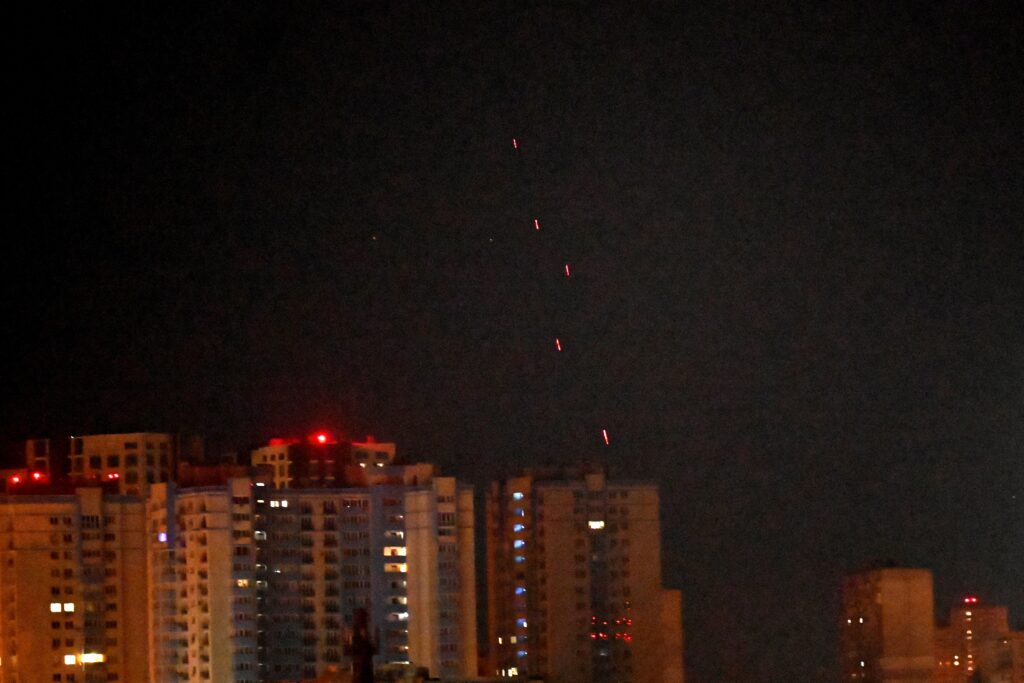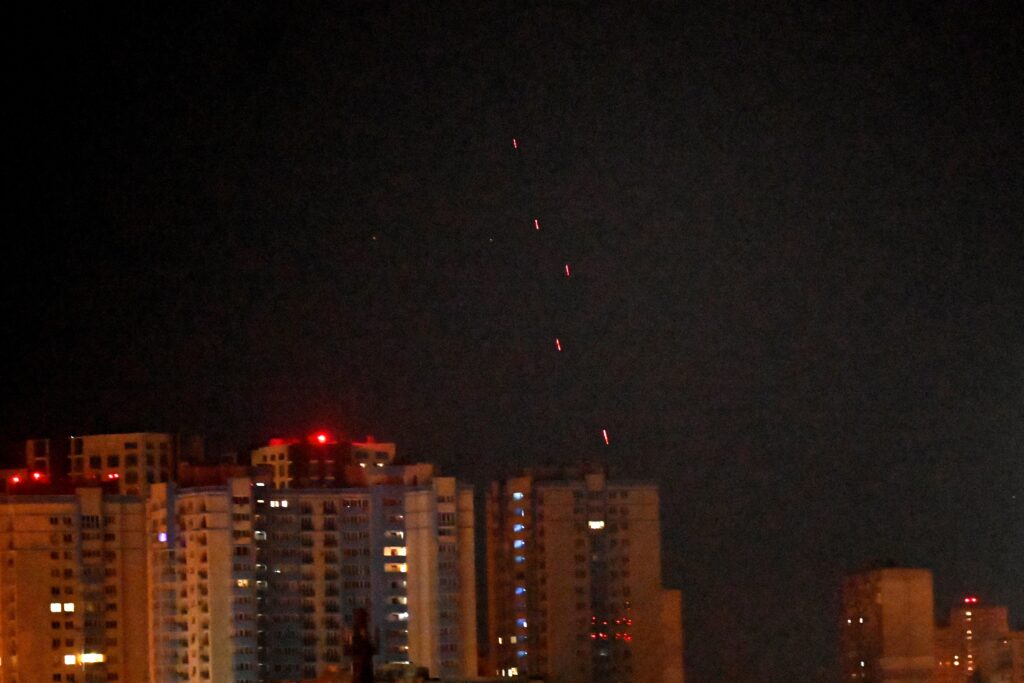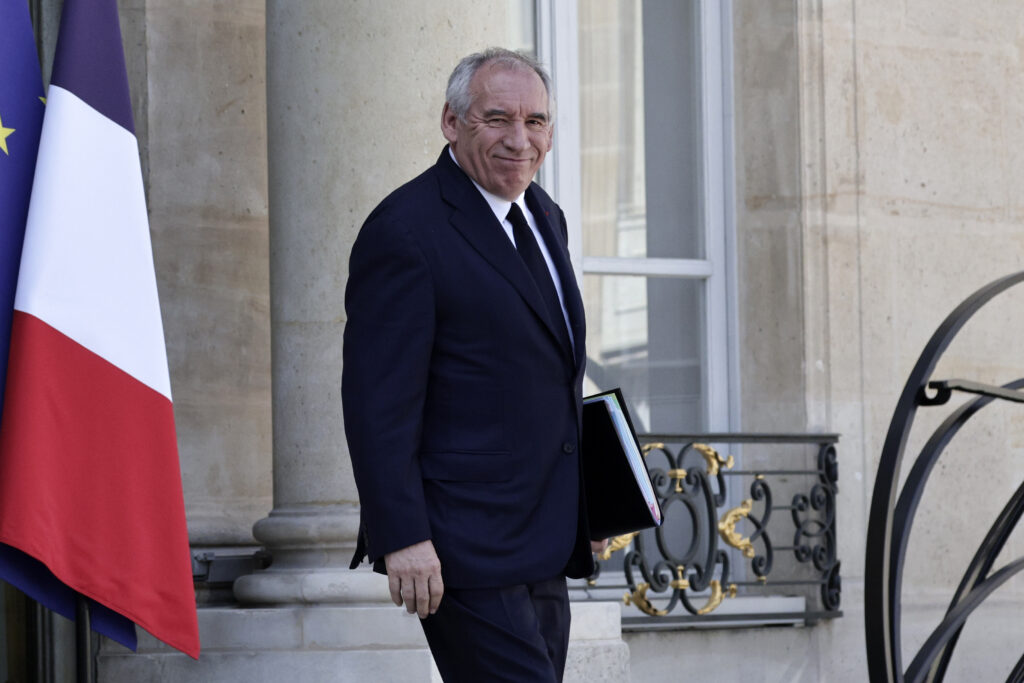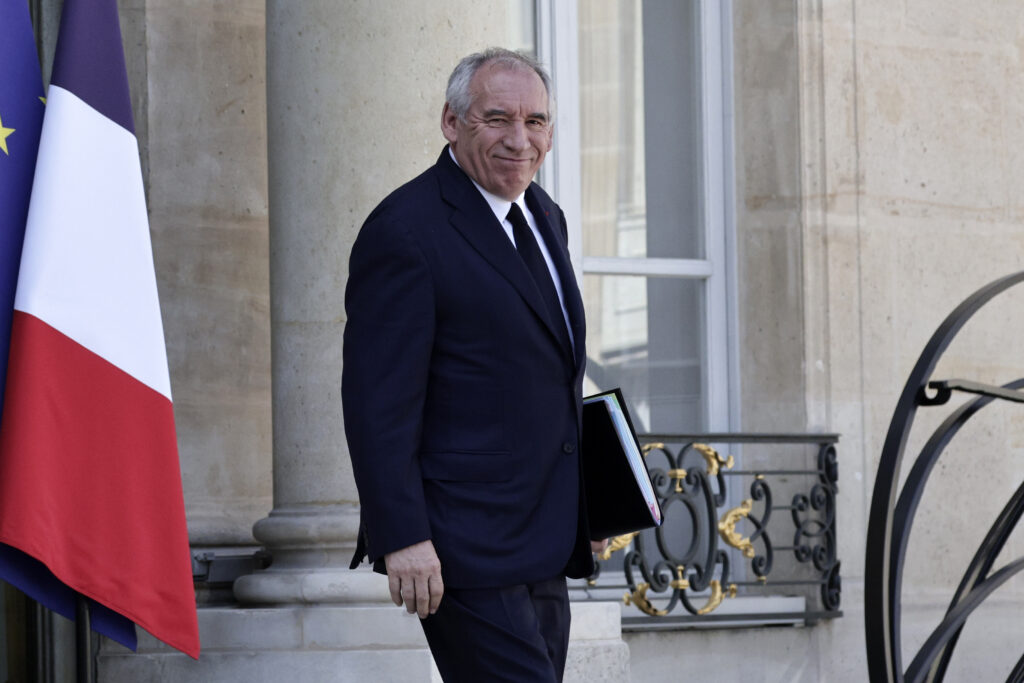Ligue des champions: Paris et l’Europe retiennent leur souffle
Les 36 équipes qualifiées pour la phase de ligue de la Ligue des champions, le PSG, tenant du titre en premier lieu, retiennent leur souffle avant de connaître leurs futurs adversaires lors du tirage au sort prévu jeudi à Monaco.Introduite la saison passée, la nouvelle formule de la plus prestigieuse des compétitions inter-clubs a connu d’emblée un grand succès, avec le premier sacre de l’histoire du Paris SG en guise d’apothéose pour le football français, au terme d’une finale de rêve à Munich face à l’Inter Milan (5-0).Plus d’affiches, plus de suspense, notamment durant une dernière journée haletante: le format inédit, avec une poule unique, a pleinement tenu ses promesses l’an passé, confortant l’UEFA dans sa volonté d’opérer un changement radical afin d’augmenter ses recettes et ainsi couper court à toute volonté de scission de certaines grandes écuries.Comme en 2024-2025, les équipes, réparties en quatre chapeaux pour le tirage (selon le coefficient UEFA calculé sur la base des résultats en Coupe d’Europe sur les cinq dernières saisons), joueront donc huit rencontres contre des adversaires différents (deux par chapeau), quatre à domicile et quatre à l’extérieur.A l’issue de cette phase initiale (du 16 septembre au 28 janvier 2026), les huit premiers seront qualifiés directement pour les 8e de finale, les formations classées de la 9e à la 24e place se disputant les huit derniers tickets en barrages aller-retour.C’est encore une fois un tirage automatisé qui déterminera les différents face-à-face, l’ordinateur devant respecter deux critères: un club ne pourra pas jouer contre un pensionnaire de son propre championnat ni affronter plus de deux représentants d’un même pays.- Paris veut “marquer l’histoire” -Seule nouveauté: contrairement à l’exercice précédent, il y aura un véritable intérêt à terminer parmi les huit premiers de la phase de ligue puisque les heureux élus auront l’avantage de recevoir lors du match retour en 8e de finale.Les quatre premiers évolueront même à domicile lors du match retour jusqu’en quart de finale alors que les deux premiers du classement bénéficieront de ce privilège pour toutes les rencontres à élimination directe.Fort de son statut de champion d’Europe, le PSG figure naturellement dans le chapeau 1 en compagnie des principaux cadors du continent (Real Madrid, Manchester City, Bayern Munich, Liverpool, Inter Milan, Chelsea, Borussia Dortmund, FC Barcelone) et va croiser les doigts pour ne pas avoir un parcours aussi corsé que la saison dernière puisqu’il n’avait terminé que 15e avant de monter en puissance à partir des barrages.Quel que soit le sort, Luis Enrique le martèle depuis des semaines: l’objectif des Parisiens est bel et bien de “continuer à marquer l’histoire” et de forger “une dynastie” en allant chercher une deuxième Ligue des champions d’affilée, le 30 mai 2026 à Budapest.”On est très ambitieux. On sait que ce sera difficile, mais c’est normal d’avoir cette mentalité”, a expliqué l’entraîneur espagnol.Paris, qui se faisait tout petit à l’été 2024 après le départ de sa superstar Kylian Mbappé au Real Madrid, ne pourra toutefois pas se cacher cette fois. Les équipes anglaises, balayées sur la route de son titre européen, le Real et le Bayern, humiliés au Mondial des clubs, ou le Barça de Lamine Yamal, sorti en demi-finales par l’Inter, attendent le PSG de pied ferme. L’OM, dans le chapeau 3 et qui va retrouver l’atmosphère des chaudes soirées de C1 après trois ans d’absence, devra sans doute cravacher pour aller au-delà de la phase de ligue. Monaco, reversé dans le 4e pot, peut également s’attendre à souffrir.
Autoroutes: moins de tués en 2024, malgré des comportements à risque persistants
Les accidents mortels sur autoroute ont atteint un niveau historiquement bas en 2024, mais les comportements à risque des conducteurs persistent, selon des données du secteur publiées jeudi. 114 accidents mortels ont été recensés sur autoroute concédée (à péage) en 2024 contre 164 en 2023, a indiqué l’Association des sociétés françaises d’autoroutes (Asfa) dans son bilan sécurité 2024.Il s’agit du “plus faible taux jamais enregistré sur les autoroutes concédées”, selon l’Asfa. Le nombre de morts a fortement baissé en conséquence, avec 129 personnes tuées en 2024 contre 182 en 2023. L’Asfa déplore en revanche la “persistance de comportements à risque” chez les conducteurs. La principale cause d’accidents mortels reste la consommation d’alcool, de drogues et de médicaments au volant (35%), qui concerne particulièrement les conducteurs de moins de 35 ans. La vitesse excessive (20%) et la présence de piétons (20%), notamment ceux sortant de véhicules à l’arrêt, figurent parmi les autres facteurs les plus fréquents d’accidents mortels.Après plusieurs années de baisse, le facteur lié à la somnolence et la fatigue a connu une “hausse inquiétante”, en passant de 13% en 2023 à 19% en 2024. L'”inattention”, souvent liée à l’utilisation d’appareils électroniques (smartphone, tablette, GPS…), est quant à elle à l’origine de 14% des accidents mortels de 2024 et particulièrement importante sur les trajets domicile/travail, avec un pic entre 14H et 18H.Rapportés au trafic, les accidents mortels liés à la somnolence surviennent essentiellement la nuit, “avec un pic entre 2h et 4h du matin”, et une fréquence accrue le week-end.L’année 2024 a aussi été marquée par la mort de deux professionnels de l’autoroute en intervention : un agent autoroutier fauché sur l’A8 le 3 mars, et, en août une salariée de la Sanef (Société des autoroutes du Nord et de l’Est de la France) tuée par un automobiliste roulant à grande vitesse au niveau d’un péage.Face au bilan 2024 “préoccupant” des accidents impliquant les professionnels autoroutiers – chiffré à 143 accidents et 15 victimes -, l’Asfa appelle à la vigilance des conducteurs pour garantir leur sécurité. 3.432 personnes sont décédées en 2024 sur les routes de France métropolitaine et d’outre-mer (+1% par rapport à 2023), selon le bilan global de la Sécurité routière. Ce bilan s’élève à 239 morts sur l’ensemble des autoroutes – concédées et non concédées – mais reste en diminution de 11% par rapport à 2023, avec 30 tués de moins.
Ukraine: dix morts dans des frappes russes massives sur Kiev
Des centaines de missiles et de drones russes se sont abattus sur des quartiers résidentiels de Kiev, faisant au moins dix morts, une attaque massive qui montre selon le président ukrainien, Volodymyr Zelensky, que la Russie “préfère les missiles balistiques plutôt que la table des négociations”.La Russie a tiré 598 drones et 31 missiles balistiques et de croisière sur l’Ukraine dans la nuit de mercredi à jeudi, a annoncé l’armée de l’air ukrainienne. Selon les données préliminaires, 563 drones de combat et drones leurres ainsi que 26 missiles ont été abattus ou brouillés, a précisé l’armée de l’air dans un communiqué. “Dix personnes sont mortes parmi lesquelles un enfant. Plus de 30 personnes ont également été blessées parmi lesquelles quatre enfants”, a indiqué le parquet ukrainien dans un communiqué.Le bâtiment de la mission de l’UE a été endommagé lors des frappes russes sur Kiev, a par ailleurs annoncé le président du Conseil européen, Antonio Costa, se disant “horrifié” de “l’agression russe qui ne fait que renforcer notre détermination à soutenir l’Ukraine et son peuple”.Tôt jeudi, les services de secours et les habitants s’affairaient à ramasser des débris de verre et de matériaux de construction dans les rues du centre de Kiev, a constaté un journaliste de l’AFP.Une attaque a creusé un cratère de cinq étages dans un immeuble d’habitation, coupant le bâtiment en deux, selon des images publiées par le président Zelensky. Les fenêtres des immeubles d’habitation et des petites entreprises ont été soufflées. Des matelas pendaient sur des balcons éventrés par une frappe. M. Zelensky a déploré “une autre attaque massive de nos villes”. “Encore des meurtres”, a écrit le président ukrainien sur Telegram. “La Russie n’a aucun intérêt pour la diplomatie. Elle choisit de continuer de tuer plutôt que de mettre fin à la guerre”, lancée il y a trois ans et demi par l’invasion russe de l’Ukraine.L’Ukraine attend une “réaction” de la part du monde entier, notamment de nouvelles sanctions à l’encontre de Moscou, a ajouté son président, appelant les alliés de la Russie, tels la Chine ou la Hongrie, membre de l’Union européenne, à adopter des positions fermes.Après trois ans et demi du conflit le plus sanglant en Europe depuis la fin de la Seconde guerre mondiale, la capitale ukrainienne a vécu une nuit de violents bombardements.Des journalistes de l’AFP ont entendu de puissantes explosions à plusieurs reprises. Ils ont vu un missile être abattu, les débris incandescents retombant, et entendu le son de drones survolant la ville, tandis que des habitants se réfugiaient dans des souterrains et dans le métro.Selon l’administration militaire, l’attaque a été menée à la fois à l’aide de drones et de missiles — balistiques, de croisière et hypersoniques — qui ont frappé la capitale en plus de 20 endroits.Des habitants étaient bloqués sous les décombres d’immeubles résidentiels. Une école maternelle a subi des dégâts, des dizaines de voitures ont été détruites et un centre commercial du centre ville a été touché.Pendant la nuit, des alertes aériennes ont retenti sur l’ensemble du territoire ukrainien.Côté russe, l’armée a indiqué avoir intercepté 102 drones ukrainiens, alors que les attaques aériennes de Kiev ciblant les raffineries ces dernières semaines ont fait flamber le prix de l’essence.- Avancées russes -Fin juillet, des bombardements russes avaient fait plus de 30 morts à Kiev, l’une des attaques les plus meurtrières dans la capitale ukrainienne depuis le début de l’invasion russe à grande échelle en 2022. Ces frappes avaient poussé le président américain, Donald Trump à accroître la pression sur Moscou pour accepter une trêve et conduit à sa rencontre avec son homologue russe, Vladimir Poutine, en Alaska le 15 août.Après ce sommet, suivi par une visite à Washington de M. Zelensky accompagné de ses alliés européens, le dirigeant américain a dit vouloir préparer une rencontre en face à face entre les présidents russe et ukrainien.Depuis, il n’y a toutefois pas eu d’avancées en vue d’un tel sommet, Moscou et Kiev se rejetant la responsabilité d’un blocage.Avant la conclusion d’un hypothétique accord de paix, l’Ukraine veut obtenir des garanties de sécurité des Occidentaux pour dissuader Moscou de toute nouvelle attaque.M. Zelensky a annoncé que des membres de son équipe allaient rencontrer vendredi à New York des représentants de l’administration de Donald Trump.Pour mettre fin à son assaut, la Russie réclame notamment que l’Ukraine lui cède quatre régions partiellement occupées, en plus de la Crimée annexée en 2014, et renonce à intégrer l’Alliance atlantique. Des conditions que Kiev juge inacceptables.L’armée russe, qui occupe environ 20% de l’Ukraine, dans l’est et le sud, a accéléré sa progression sur le terrain ces derniers mois face à des unités ukrainiennes moins nombreuses et moins bien équipées.
Ukraine: dix morts dans des frappes russes massives sur Kiev
Des centaines de missiles et de drones russes se sont abattus sur des quartiers résidentiels de Kiev, faisant au moins dix morts, une attaque massive qui montre selon le président ukrainien, Volodymyr Zelensky, que la Russie “préfère les missiles balistiques plutôt que la table des négociations”.La Russie a tiré 598 drones et 31 missiles balistiques et de croisière sur l’Ukraine dans la nuit de mercredi à jeudi, a annoncé l’armée de l’air ukrainienne. Selon les données préliminaires, 563 drones de combat et drones leurres ainsi que 26 missiles ont été abattus ou brouillés, a précisé l’armée de l’air dans un communiqué. “Dix personnes sont mortes parmi lesquelles un enfant. Plus de 30 personnes ont également été blessées parmi lesquelles quatre enfants”, a indiqué le parquet ukrainien dans un communiqué.Le bâtiment de la mission de l’UE a été endommagé lors des frappes russes sur Kiev, a par ailleurs annoncé le président du Conseil européen, Antonio Costa, se disant “horrifié” de “l’agression russe qui ne fait que renforcer notre détermination à soutenir l’Ukraine et son peuple”.Tôt jeudi, les services de secours et les habitants s’affairaient à ramasser des débris de verre et de matériaux de construction dans les rues du centre de Kiev, a constaté un journaliste de l’AFP.Une attaque a creusé un cratère de cinq étages dans un immeuble d’habitation, coupant le bâtiment en deux, selon des images publiées par le président Zelensky. Les fenêtres des immeubles d’habitation et des petites entreprises ont été soufflées. Des matelas pendaient sur des balcons éventrés par une frappe. M. Zelensky a déploré “une autre attaque massive de nos villes”. “Encore des meurtres”, a écrit le président ukrainien sur Telegram. “La Russie n’a aucun intérêt pour la diplomatie. Elle choisit de continuer de tuer plutôt que de mettre fin à la guerre”, lancée il y a trois ans et demi par l’invasion russe de l’Ukraine.L’Ukraine attend une “réaction” de la part du monde entier, notamment de nouvelles sanctions à l’encontre de Moscou, a ajouté son président, appelant les alliés de la Russie, tels la Chine ou la Hongrie, membre de l’Union européenne, à adopter des positions fermes.Après trois ans et demi du conflit le plus sanglant en Europe depuis la fin de la Seconde guerre mondiale, la capitale ukrainienne a vécu une nuit de violents bombardements.Des journalistes de l’AFP ont entendu de puissantes explosions à plusieurs reprises. Ils ont vu un missile être abattu, les débris incandescents retombant, et entendu le son de drones survolant la ville, tandis que des habitants se réfugiaient dans des souterrains et dans le métro.Selon l’administration militaire, l’attaque a été menée à la fois à l’aide de drones et de missiles — balistiques, de croisière et hypersoniques — qui ont frappé la capitale en plus de 20 endroits.Des habitants étaient bloqués sous les décombres d’immeubles résidentiels. Une école maternelle a subi des dégâts, des dizaines de voitures ont été détruites et un centre commercial du centre ville a été touché.Pendant la nuit, des alertes aériennes ont retenti sur l’ensemble du territoire ukrainien.Côté russe, l’armée a indiqué avoir intercepté 102 drones ukrainiens, alors que les attaques aériennes de Kiev ciblant les raffineries ces dernières semaines ont fait flamber le prix de l’essence.- Avancées russes -Fin juillet, des bombardements russes avaient fait plus de 30 morts à Kiev, l’une des attaques les plus meurtrières dans la capitale ukrainienne depuis le début de l’invasion russe à grande échelle en 2022. Ces frappes avaient poussé le président américain, Donald Trump à accroître la pression sur Moscou pour accepter une trêve et conduit à sa rencontre avec son homologue russe, Vladimir Poutine, en Alaska le 15 août.Après ce sommet, suivi par une visite à Washington de M. Zelensky accompagné de ses alliés européens, le dirigeant américain a dit vouloir préparer une rencontre en face à face entre les présidents russe et ukrainien.Depuis, il n’y a toutefois pas eu d’avancées en vue d’un tel sommet, Moscou et Kiev se rejetant la responsabilité d’un blocage.Avant la conclusion d’un hypothétique accord de paix, l’Ukraine veut obtenir des garanties de sécurité des Occidentaux pour dissuader Moscou de toute nouvelle attaque.M. Zelensky a annoncé que des membres de son équipe allaient rencontrer vendredi à New York des représentants de l’administration de Donald Trump.Pour mettre fin à son assaut, la Russie réclame notamment que l’Ukraine lui cède quatre régions partiellement occupées, en plus de la Crimée annexée en 2014, et renonce à intégrer l’Alliance atlantique. Des conditions que Kiev juge inacceptables.L’armée russe, qui occupe environ 20% de l’Ukraine, dans l’est et le sud, a accéléré sa progression sur le terrain ces derniers mois face à des unités ukrainiennes moins nombreuses et moins bien équipées.
François Bayrou jeudi devant un Medef hostile à tout retour de l’ISF
François Bayrou, désormais prêt “à toutes les négociations nécessaires” sur le budget s’il remporte son pari d’un vote de confiance à l’Assemblée nationale, viendra l’évoquer jeudi devant un Medef fermement opposé à tout retour d’un impôt de type ISF, souhaité par la gauche.Le Premier ministre interviendra à 14H30 devant la Rencontre des entrepreneurs de France (REF), qui se tient pour la première fois à Roland-Garros avec un slogan qui résonne avec l’actualité : “Jeu décisif”.M. Bayrou, qui a présenté le 15 juillet les grandes lignes d’un effort budgétaire de 44 milliards d’euros en 2026, s’attirant la désapprobation des oppositions avec des idées comme la suppression de deux jours fériés, a surpris lundi en annonçant qu’il se soumettrait à un vote de confiance à l’Assemblée nationale le 8 septembre.Le décret présidentiel convoquant le Parlement en session extraordinaire pour ce vote de confiance a été publié au Journal Officiel jeudi, avec un ordre du jour en un seul point : “une déclaration de politique générale”, en application de l’article 49-1 de la Constitution.Les oppositions ayant annoncé qu’elles voteraient contre, M. Bayrou a affirmé mercredi sur TF1 qu’il recevrait les responsables de partis et de groupes parlementaires à partir de lundi pour “examiner les choses avec eux”, avec pour “condition préalable de s’entendre sur l’importance de l’effort” à réaliser.Mardi et jeudi, ce sont les partenaires sociaux auxquels le Premier ministre a rendu ou rendra visite.La cheffe de file de la CFDT Marylise Léon est favorable à faire contribuer davantage les plus riches au budget, alors que Patrick Martin estime que, “quelle qu’en soit la forme, un retour de l’ISF serait ravageur pour notre économie, et nous nous y opposerons”.Déjà incisif mercredi à la tribune de la REF, il a accusé jeudi matin sur BFM Business les hommes politiques “d’être dans un monde parallèle et de ne pas voir ce qui se passe sur la planète sur le plan économique” notamment en matière de concurrence internationale.”Que ceux qui expriment de manière politicienne ce genre de propositions”, une forte taxation du patrimoine des plus riches, “n’oublient jamais que si les chefs d’entreprises lèvent le crayon, le pays part en vrille”, a-t-il soutenu.Le Medef est davantage ouvert à “un double effacement”, selon M. Martin, la remise en cause de certains avantages financiers consentis aux entreprises contre “un abaissement des seuils d’imposition à l’euro près, si possible avec un gain”. Il a néanmoins espéré “un ressaisissement de la part des partis dits de gouvernement pour, le temps qu’il faudra, passer au-dessus de leurs calculs (…) individuels, poser les colts et discuter avec les chefs d’entreprise.”A quatre jours de commencer à recevoir les chefs de partis à Matignon, François Bayrou les manquera de peu, jeudi à la REF. En effet, événement-phare de cette université d’été, la table ronde de clôture réunira, une heure après la fin d’intervention du Premier ministre, l’ensemble des chefs de partis pour un débat sur l’avenir économique du pays.
François Bayrou jeudi devant un Medef hostile à tout retour de l’ISF
François Bayrou, désormais prêt “à toutes les négociations nécessaires” sur le budget s’il remporte son pari d’un vote de confiance à l’Assemblée nationale, viendra l’évoquer jeudi devant un Medef fermement opposé à tout retour d’un impôt de type ISF, souhaité par la gauche.Le Premier ministre interviendra à 14H30 devant la Rencontre des entrepreneurs de France (REF), qui se tient pour la première fois à Roland-Garros avec un slogan qui résonne avec l’actualité : “Jeu décisif”.M. Bayrou, qui a présenté le 15 juillet les grandes lignes d’un effort budgétaire de 44 milliards d’euros en 2026, s’attirant la désapprobation des oppositions avec des idées comme la suppression de deux jours fériés, a surpris lundi en annonçant qu’il se soumettrait à un vote de confiance à l’Assemblée nationale le 8 septembre.Le décret présidentiel convoquant le Parlement en session extraordinaire pour ce vote de confiance a été publié au Journal Officiel jeudi, avec un ordre du jour en un seul point : “une déclaration de politique générale”, en application de l’article 49-1 de la Constitution.Les oppositions ayant annoncé qu’elles voteraient contre, M. Bayrou a affirmé mercredi sur TF1 qu’il recevrait les responsables de partis et de groupes parlementaires à partir de lundi pour “examiner les choses avec eux”, avec pour “condition préalable de s’entendre sur l’importance de l’effort” à réaliser.Mardi et jeudi, ce sont les partenaires sociaux auxquels le Premier ministre a rendu ou rendra visite.La cheffe de file de la CFDT Marylise Léon est favorable à faire contribuer davantage les plus riches au budget, alors que Patrick Martin estime que, “quelle qu’en soit la forme, un retour de l’ISF serait ravageur pour notre économie, et nous nous y opposerons”.Déjà incisif mercredi à la tribune de la REF, il a accusé jeudi matin sur BFM Business les hommes politiques “d’être dans un monde parallèle et de ne pas voir ce qui se passe sur la planète sur le plan économique” notamment en matière de concurrence internationale.”Que ceux qui expriment de manière politicienne ce genre de propositions”, une forte taxation du patrimoine des plus riches, “n’oublient jamais que si les chefs d’entreprises lèvent le crayon, le pays part en vrille”, a-t-il soutenu.Le Medef est davantage ouvert à “un double effacement”, selon M. Martin, la remise en cause de certains avantages financiers consentis aux entreprises contre “un abaissement des seuils d’imposition à l’euro près, si possible avec un gain”. Il a néanmoins espéré “un ressaisissement de la part des partis dits de gouvernement pour, le temps qu’il faudra, passer au-dessus de leurs calculs (…) individuels, poser les colts et discuter avec les chefs d’entreprise.”A quatre jours de commencer à recevoir les chefs de partis à Matignon, François Bayrou les manquera de peu, jeudi à la REF. En effet, événement-phare de cette université d’été, la table ronde de clôture réunira, une heure après la fin d’intervention du Premier ministre, l’ensemble des chefs de partis pour un débat sur l’avenir économique du pays.






